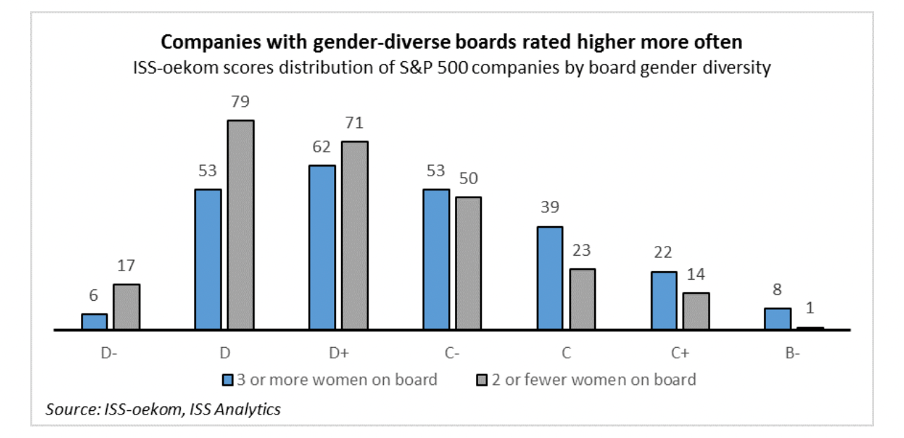-
The latest State of the Environment report was released last month and environment and water minister Tanya Plibersek said it was a “shocking document” that told “a story of crisis and decline in Australia’s environment, and a decade of government inaction and wilful ignorance”.
So, what got us into this mess? And how do we get out of it?
“Those who are most affected by climate change today - women, girls and marginalised communities - must be involved in the design and implementation of climate response actions to ensure the equal sharing of benefits.” – UN Women
Diverse leadership
According to UN women, “those who are most affected by climate change today - women, girls and marginalised communities - must be involved in the design and implementation of climate response actions to ensure the equal sharing of benefits.”
It’s time we recognised the challenges we’re facing aren’t just climate and biodiversity crises. This is fundamentally a leadership crisis.
We need to ask ourselves the following questions:
- What does leadership for our environment and climate look like?
- Who is really leading? And if they aren’t, why not?
- What are the levers of change you could be pulling? And what’s stopping you?
We need to ask ourselves what does leadership look like in Australia today? Is it up to the challenges we face?
The answer is clear. Leadership in Australia to date has failed to adequately address these challenges. We need a leadership change. Not just new faces but a new style.
This is where women’s leadership for our environment emerges as a key solution.
International evidence from studies across business and politics demonstrates more women in decision making results in better environmental outcomes.
{CF_IMAGE}
- Companies with more women on their boards are more likely to have stronger environmental policies.
- Companies with more gender-balanced boards are less often sued for breaching environmental laws.
Empowerment
While diverse voices bring different perspectives and should be supported, one of the most important factors is how those voices are empowered to lead.
When women and gender diverse people from a variety of backgrounds and communities are empowered to lead in ways they identify with - that’s when you can really get something different.
According to research led by Professor Amanda Sinclair at the Melbourne Business School:
- When women are given space to step outside of existing models and norms that dominate their organisations or communities and identify their own way of working, they tend to consistently reject hierarchy, put effort into building relationships, empowering others and emphasise collective achievement and responsibility.
- There is no one way of women leading and, in fact, there is considerable diversity in the way women go about the job of leadership.
- This way of working involves relationships, networks and collaboration and, at its best, embraces these strategically.
This is quite different the traditional model of leadership which has been seen as masculine, heroic and individual. A model that reinforces self-reliance, assertiveness and competition.
A sustainable future
Relationships enable collaboration. Collaboration is the genesis of innovation. And we are in desperate need of innovation across all aspects of our society, our politics and our economic activity.
What we see in diverse women’s leadership are the skills and approaches essential to a sustainable future.
If we want a healthy planet for our future, we need more women and gender diverse people leading - from all levels, in all sectors, in formal and informal roles.
Women’s Environmental Leadership Australia (WELA) is on its way to creating this change.
WELA is an independent organisation and a growing community of women working to transform Australia’s response to our environmental and climate crisis. Their work supports women across communities and sectors including participants from the corporate sector, from government agencies and from industry, as much as women from the NGO sector or local grassroots community groups.
New leadership approaches to environment and climate action are desperately needed. We all have a role to play to enable and support this.
So now, to you. The future is ours for the making. What doors can we open together to make it as good as possible?
ANZ’s Green Ambassador Summit
As a purpose-led organisation, ANZ is committed to supporting the transition of business, household and financial practices that improve environmental sustainability.
The Green Ambassador Summit is an annual professional learning and development opportunity for ANZ employees featuring relevant speakers and topics to help build ANZ’s capability around sustainable mindset and culture.
This article is based on a keynote at the 2022 Summit, hosted by ANZ CEO Shayne Elliott, on The importance of women’s leadership in response to climate change and biodiversity loss.
Victoria McKenzie-Mcharg is the Strategic Director of Women's Environmental Leadership Australia (WELA)
The views and opinions expressed in this communication are those of the author and may not necessarily state or reflect those of ANZ.
-
anzcomau:Bluenotes/social-and-economic-sustainability,anzcomau:Bluenotes/Leadership-and-Management
Climate change is a gender issue as well as an existential one
2022-09-08
/content/dam/anzcomau/bluenotes/images/articles/2022/September/Australia State of the Enviroment.jpg
EDITOR'S PICKS
-
Command and control-style leadership will not help organisations attract and retain talent anymore. Now, the focus must be on empathetic leadership.
15 March 2022 -
It could be time to move beyond ESG – not because it’s not important but because it’s too complex and too important to lump environmental, social and governance challenges together.
10 August 2022

